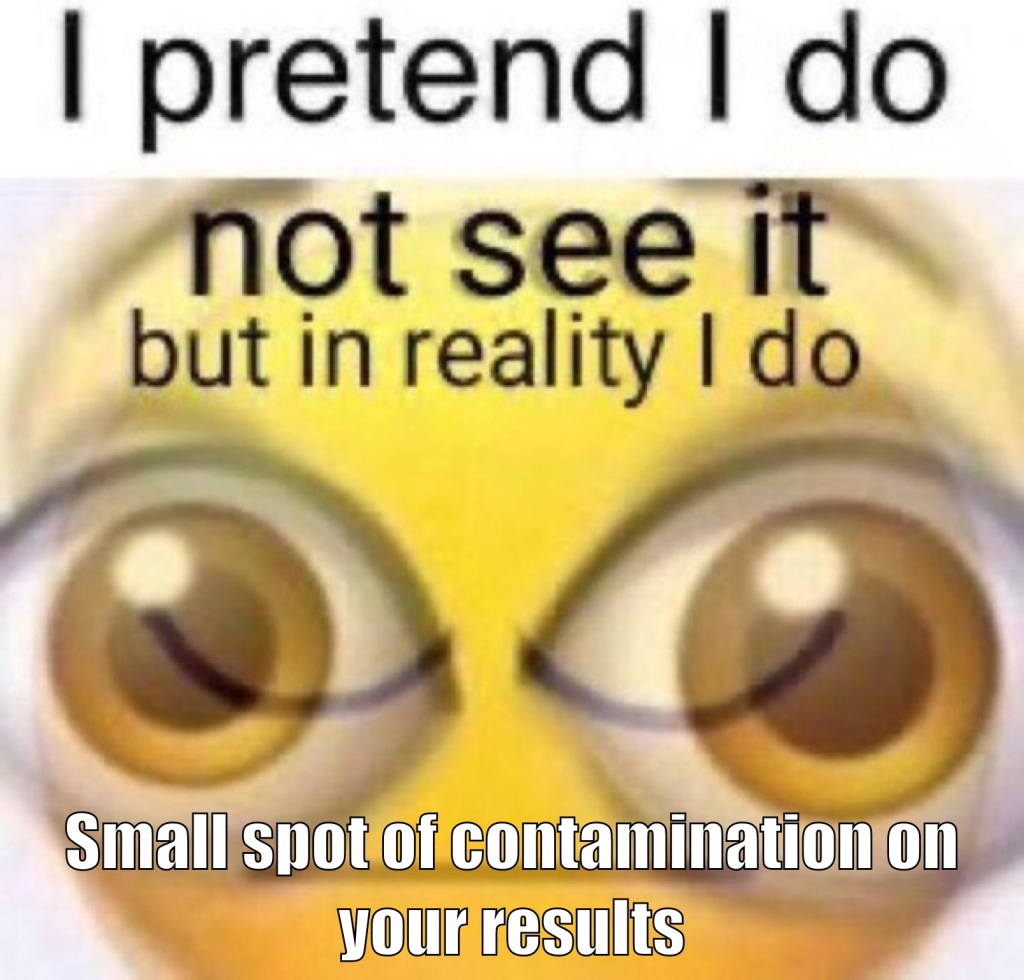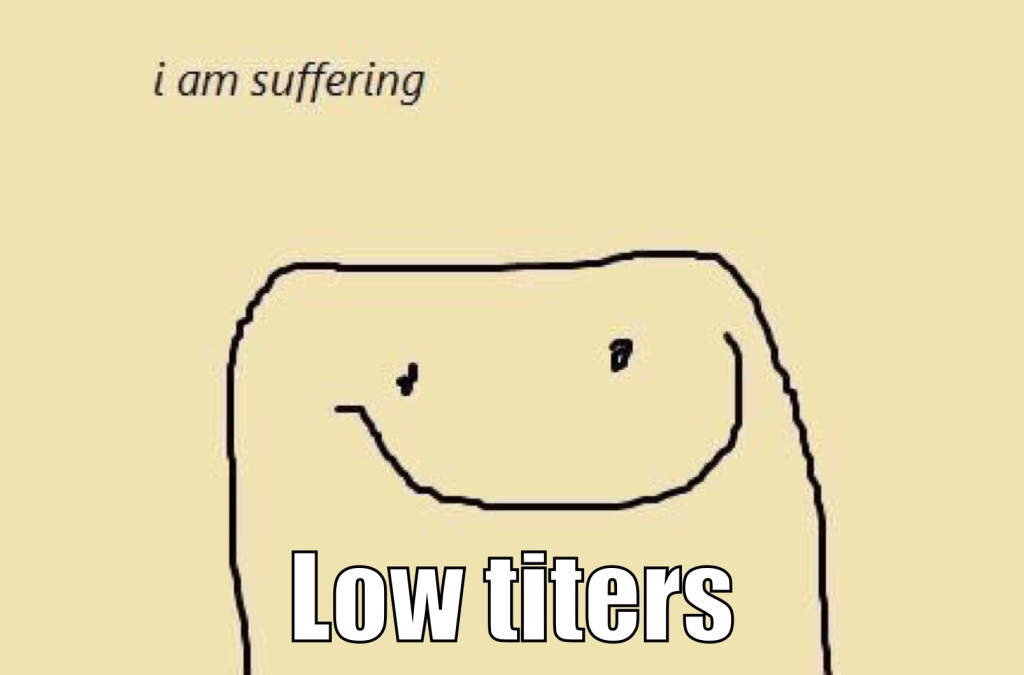We, the Delesalle Lab, work with bacteriophages (phages for short!). Phages are viruses that “eat” bacteria and are the most numerous organisms in the world. There are an estimated 1031 phages on Earth, more than any other domain combined. They “eat” bacteria by injecting their DNA and hijacking the bacterial DNA replication processes to reproduce more phage particles. The new phages can either be immediately made and explode out of the bacteria (lytic phages) or rest dormant in a bacterial cell with phage DNA integrated into the genome (prophages). Since phages cannot reproduce by themselves, they can be considered to be non-living. Phages and bacteria are in a continual “arms race” as the phages evolve to better eat the bacteria while the bacteria evolve to better defend themselves. Back and better than ever after a year off and a whole new team, the lab has been working on gathering host range data for a collection of novel phages and continuing to work with our passaging samples from the last two years.
Get to Know the Phamily
A Day in the Life of a Phage Tamer
- Arrive at 9am and check the extensive list of chores Megan wrote down
- We check our data results from any plates made the previous day
- Luke runs his galaxy, Mark and Tabitha check on their 96 well plates, and Megan checks on her phage plates
- Clean up the household –> autoclaving, making plates, dishwashing, bin washing, and restocking (sometimes do a little bit of shopping in the dungeon)
- Get started on our projects for the day
- Lunch! (sometimes we have lab meetings while we eat)
- Finish up our projects
- Debrief at the end of day
- Create another To Do list for the next day
This summer we are tackling a handful of projects. As of now we are titering (determining the concentration) and amplifying (increasing the concentration) 16 novel phages to plate them against 14 bacteria strains. We determine the concentration of the phage by counting the number of plaques (tiny clear holes in the agar) at a certain dilution of our phage sample.
This process of titering and amplification if for an experiment called a host range experiment. This is done to determine the phages ability to infect different strains of bacteria. gathering images and host range data on 16 bacteriophages that have already been sequenced. In order to do this the phage are spot tested. Spot Testing is a common and relatively simple technique for phage research that involves applying a small amount of phage solution to a thin layer of bacteria spread on a Petri dish known as a bacteria lawn and allowing phages to diffuse and infect the bacteria. If the phages are able to infect the bacteria host cells, a clear spot will form in that lawn indicating where the phages have lysed the bacteria. We are also using a machine called Plate Reader, which measures bacterial growth by calculating how much light it absorbs. Different strains of bacteria will absorb different amounts of light, and if that strain is infected by a phage, it will absorb less light. We are gathering all the absorbance data by plating different bacterial strains and phages in 96-well plates and then putting them in the plate reader for 24 hours. Once we have all that, we will compare absorbance curves for bacteria growth in the absence or presence of different phages.
A second project in our lab is comparing the impact of ancestral phages, evolved phages, and coevolved phages on coevolved bacteria and ancestral bacteria. This is a continuation of the passaging sample data work that is has been done the last few years. This data will possibly help us determine if mutations that arise in the genomes of phage and bacteria due to coevolutionary arms race, have an impact on the infectivity and defense of the phage and bacteria respectively. It considers the possible relationship between genetic changes in two strains of phages (evolved and coevolved) and their ability to infect two strains of coevolved bacterial hosts. The approach is to constitute growth curves for the ancestral bacteria when growing alone, exposed to the ancestral phage, and exposed to evolved/coevolved phages. The bacteria population growth is measured spectrophotometrically – the lower the absorbance, the less dense the bacteria culture, and the more effective the phage can lyse its host!
The third project of our lab also works with the data from our passaging experiments. This project focuses on analyzing the mutations that were found in the extracted genomes of the passaging samples. Using a workflow pipeline in a website called Galaxy, we can identity variations and amino acids changes from our passaging samples by comparing them against a reference phage genome. Additionally, we are able to observe the frequency of these variations in the population as well as when they appear and if they disappear. By looking at this data, we hope it will help us investigate the ability for wild and domesticated phages to adapt to their domesticated and wild bacterial hosts.

Variants identified in SPP1 phage and T89-06 bacteria evolved treatment on day 4.








